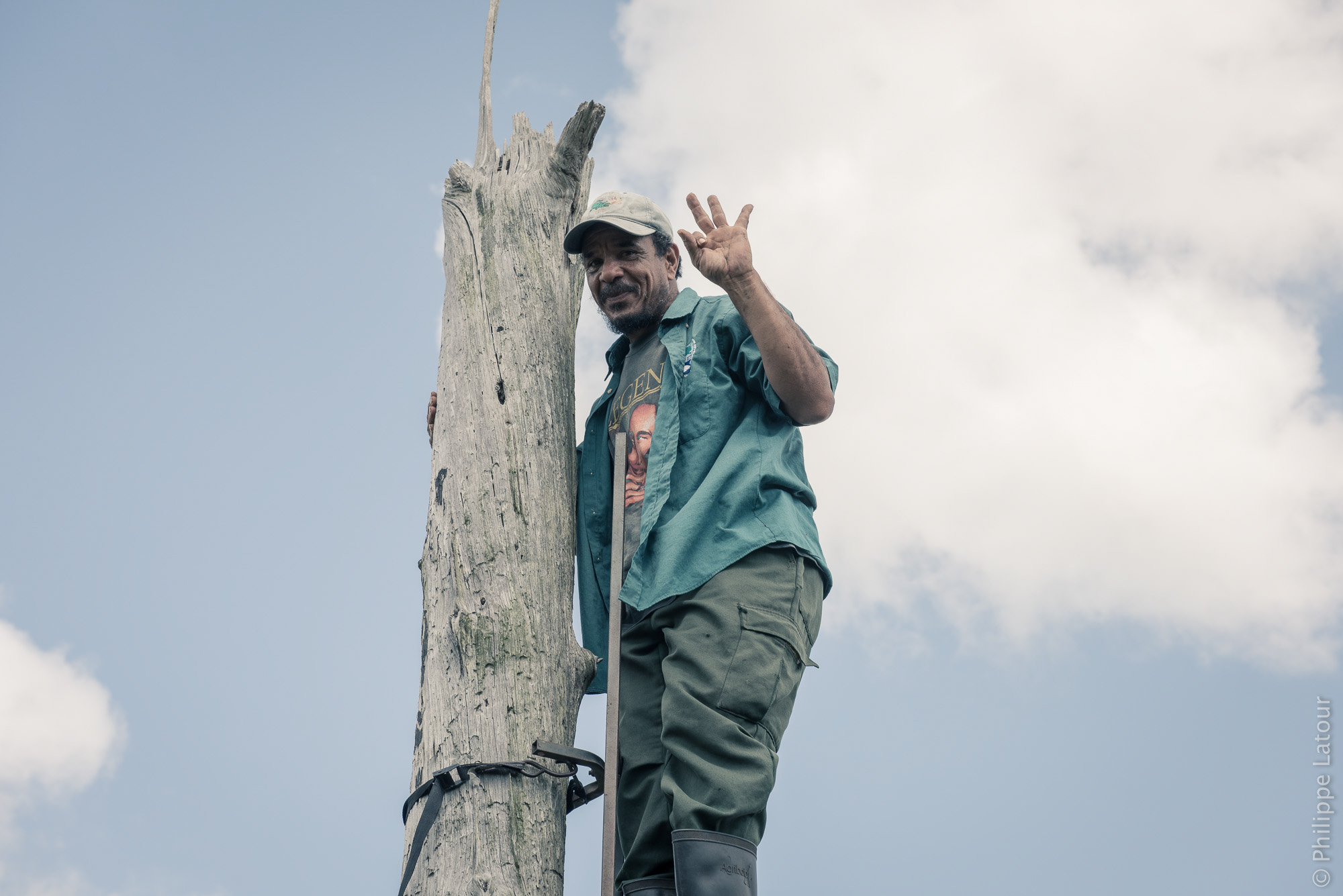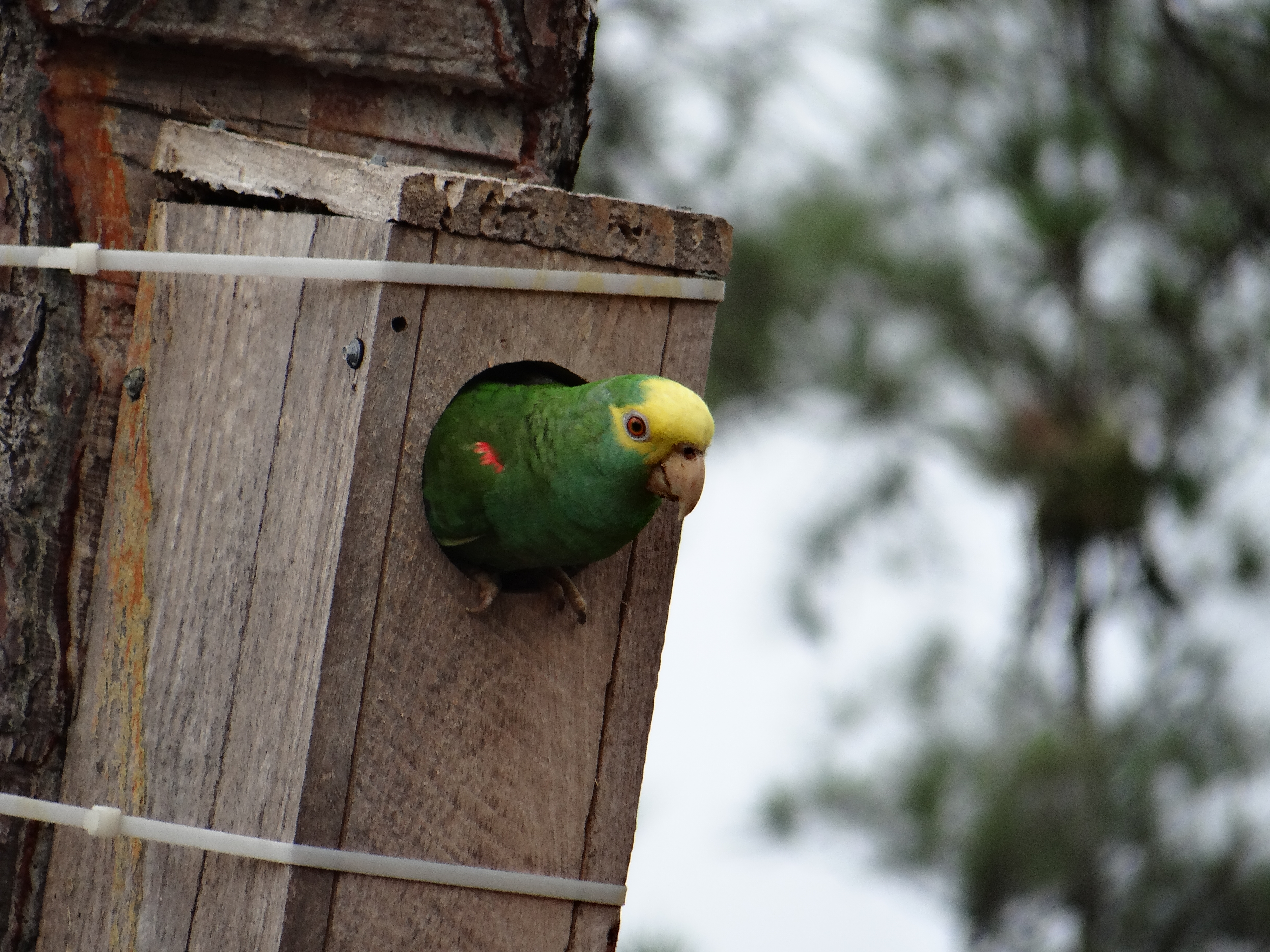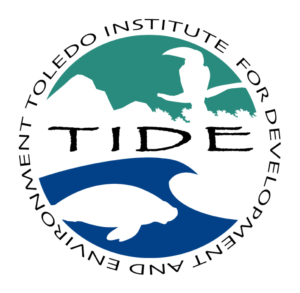The Yellow-headed parrot is an endangered species due to its popularity as a pet; therefore it is often captured and sold into the pet trade. With most poaching occurring in the forest reserves surrounding Payne’s Creek National Park (PNCP), members of TIDE’s terrestrial team have set up an artificial nest box program to offer greater protection and increase survival for this endangered species. We have monitored the breeding success in both artificial and natural nests. Of 19 nest boxes, five were used, with 10 eggs laid and five chicks successfully fledged. We observed 14 natural nests. In the six within reach of proper monitoring, 16 eggs were laid, 13 hatched, and nine chicks fledged.
Due to the success of the nestboxes, TIDE has invested in a new yellow-headed parrot project that involved building large cages in PCNP to house parrots that had been seized from homes by the Belize Bird Rescue organisation. Terrestrial Manager Mario Muschamp and PCNP Head Ranger Leonard Williams, will monitor the birds before their eventual release back into the wild.
The first project of its kind was to release yellow-headed parrots, two that were confiscated as pets and four that were found in over crowded nestboxes. Leonard Williams has been opening the cage in daylight and observing the birds’ behavior as they become more confident in their new and natural environment. So far Leonard has witnessed an increase in flight as the birds travel further and for longer. He has seen the parrots’ natural instincts kick in as they avoid predators and they are getting more adventurous every day in their natural pine habitat. The only thing the birds currently have trouble with is learning which branch of a tree to perch on. In the wild, their mothers would guide the birds to the best spot, so our birds are learning slowly for themselves.
Leonard watches the parrots from afar and grasps their behavior. Sometimes they want to sit close to him in open areas, but he shoos them off to ensure no connection is formed between the parrots and humans because it will hinder their transition into the wild. From his observations, Leonard can recognize each parrot by size, coloring and behavior. He has seen two parrots form a particularly close relationship, which he thinks could become a mating partnership over the next 5 years as they mature as parrots pair for life.

The birds fly back into the cage every night. It is hoped once the birds are fully mature, they won’t come back as they will have found a mate and began their own lives in the wild. Leonard is waiting until the birds have learnt enough (for example, once they know where to perch) and then he will chase the parrots off, like their mothers would do naturally.
To help increase the population, the Belize Forest Department has also passed a law, declaring it is illegal to attain any new yellow-headed parrots as pets. Also, every person with an existing pet must register their Yellow-Headed parrots by December 31st 2014 or be fined up to $1000BZ and/or face jail time.
The yellow-headed parrot conservation in PCNP is a complete success thanks to the dedication of Mario Muschamp, Leonard Williams, as well as the folks from Belize Bird Rescue.

